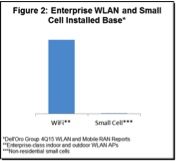New fast, stretchable circuits that adhere to the skin like tattoos may revolutionize the IoT, not least biomedical applications.
Scientists at the University of Wisconsin-Madison (UW–Madison) have created what they claim to be the world’s fastest stretchable circuits. The new 5G-capable stretchy electronics may revolutionize the IoT, starting with biomedical applications. ”The advance is a platform for manufacturers seeking to expand the capabilities and applications of wearable electronics — including those with biomedical applications — particularly as they strive to develop devices that take advantage of a new generation of wireless broadband technologies referred to as 5G,” said UW-Madison. ”With wavelength sizes between a millimeter and a meter, microwave radio frequencies are electromagnetic waves that use frequencies in the .3 gigahertz to 300 gigahertz range. That falls directly in the 5G range.”
The new integrated circuits are fabricated in interlocking segments like a 3D puzzle and increase wireless speed to 5G levels. The stretchy circuits can currently operate at radio frequency levels up to 40 gigahertz. The technology could be used in wearable electronics that adhere to the skin like temporary tattoos, among other things to allow medical staff to monitor patients remotely and wirelessly.
The stretchable circuits have a unique structure inspired by twisted-pair telephone cables, containing two ultra-tiny intertwining power transmission lines in repeating S-curves, UW-Madison explained. Because of its serpentine shape, the circuits allows the transmission line to stretch almost without performance or current loss while shielding it from outside interference. ”The circuits are also much thinner than other stretchable transmission, at just 25 micrometers or .025 millimeters, compared to widths approaching 640 micrometers or .64 millimeters in other stretchy electronics. We’ve found a way to integrate high-frequency active transistors into a useful circuit that can be wireless. This is a platform. This opens the door to lots of new capabilities,” said Zhenqiang “Jack” Ma, Lynn H. Matthias Professor in Engineering and Vilas Distinguished Achievement Professor in electrical and computer engineering at UW–Madison.
The research was published in the journal Advanced Functional Materials.
IIoT News Recap: Intel acquires Itseez; Michigan wants to allow self-driving vehicles; SK Telecom becomes chairman of Facebook’s TIP; Panasonic launches DW relays for the smart home; Today’s forecast: Indoor air quality technologies
M&A: Intel acquires computer vision expert Itseez
As part of its transition from a PC to an IoT company, Intel has acquired Itseez, an expert in computer vision (CV) technologies key to autonomous driving, security systems and medical imaging among others. ”Itseez will become a key ingredient for Intel’s Internet of Things Group (IOTG) roadmap, and will help Intel’s customers create innovative deep-learning-based CV applications like autonomous driving, digital security and surveillance, and industrial inspection,” Intel said in a statement.
Autonomous driving: Michigan bills to allow for public sales and operation of self-driving cars
The state of Michigan, the U.S. car industry’s home, is pushing legislation that will allow for public sales and operation of self-driving vehicles on public roads. Truck platoons and networks of on-demand self-driving vehicles could also be allowed according to the bills. Existing laws, passed in 2013, allow autonomous driving for testing only.
5G: SK Telecom becomes chairman of Telecom Infra Project (TIP)
Choi Jin-sung, CEO of South Korean operator SK Telecom is taking up the inaugural chairmanship of Telecom Infra Project (TIP), the organization led by Facebook CEO Mark Zuckerberg, Yonhap news agency reports. TIP’s ambition is to study and advance 5G technologies. “We aim to lead the global 5G industry through continuative cooperation with leaders of information and communication technologies, including Facebook,” Choi Jin-sung said.
Smart home: Panasonic launches DW Relays suited for the smart home market
Panasonic will release this month a thin-design DW Relay suited for remote-control applications including smart switches and smart power outlets used in smart homes, the company announced. ”Panasonic’s new relay is thin, with a height of 15.8 mm, and achieves low power consumption, making it possible to create compact, high-functionality and power-efficient switches and power outlets,” said Panasonic.
Today’s forecast: Indoor air quality technologies revenue to reach $55.4 billion from 2015 to 2024
Navigant Research forecasts that revenue from indoor environmental and air quality (IEAQ) technologies will total $55.4 billion from 2015 to 2024. “The IEAQ market heavily depends on the building technology value chain, which consists of architects, engineers, real estate management professionals, and building owners and managers,” said Anne Wrobetz, research analyst at Navigant Research. “IEAQ tends to become less of a priority after construction is finished, but an evolution in the marketplace could change this perception and lead to more interest in technologies providing advanced air ventilation and filtration.”


